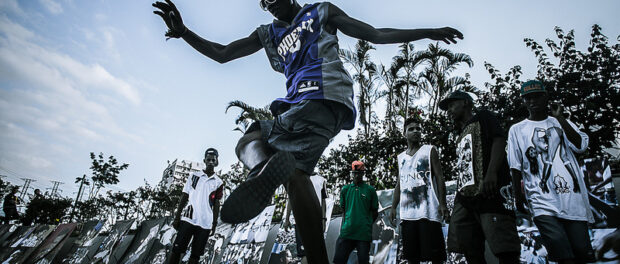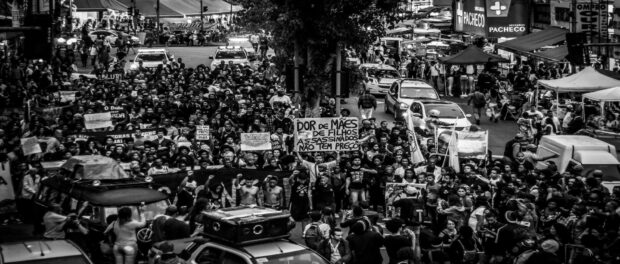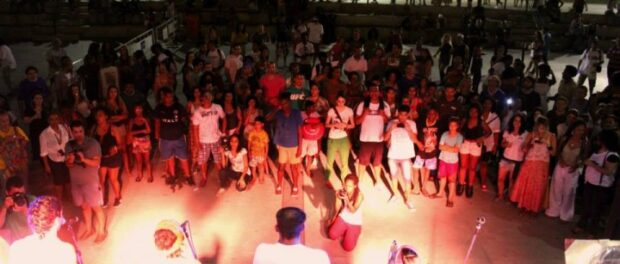
For the original article by Priscila Rodrigues in Portuguese published by Observatório de Favelas click here.
“I have to go into the city.” It might sound strange to those who have always lived on the other side of the Rebouças Tunnel, but anyone born and raised on the outskirts of Rio de Janeiro knows that the word “city” was once commonly used to refer to Rio’s Central Station. As if living far from downtown was enough to feel, or be treated, as an outsider. Excluded! But this relationship to the city space has recently changed. There have been signs of gradual progress since 1975 when the city of Rio was incorporated into the state of Rio de Janeiro. Parque Madureira (Madureira Park) is a good example of this change. Since its opening in 2012, it has hosted a variety of projects, including Black Cultural Movement–My Curls and My Afro, Youth Marked to Live; and Against the Genocide of Black Youth. Built to provide opportunities for leisure, it has emerged as a place of powerful mobilization in the city’s North Zone.
Black empowerment is the focus of Barbara Lage’s monthly project, Black Cultural Movement–My Curls and My Afro, now in its 12th edition. She and a network of volunteers offer workshops, book exchanges and debates on black identity, using physical appearance as a starting point. “Our battle cry, as black people, begins with aesthetics. It’s through the hair, the clothes, the acceptance of our phenotype…. And from there we tackle other mountains. We needed a base, a place where people could feel at home. I found that at Parque Madureira. You’ll see a black woman braiding hair there. You’ll see a black man dancing. You’ll see a black doctor. You’ll see a black housekeeper. You’ll see black flesh. Madureira is a little piece of Africa,” she said.
It was no accident that Youth Marked to Live–which sought to raise awareness about the high murder rate affecting black youth–chose to kick off its 2013 event at Parque Madureira. “The idea was to circulate throughout the city. We did two flash mobs downtown. We filmed on Morro da Baiana in Complexo do Alemão. In Urca, we collected signatures for a petition at the Federal University of Rio de Janeiro’s School of Communication. But the campaign launch had to be in Parque Madureira,” said Valnei Succo, one of the creators and faces of the project which involved students from the Favela Observatory’s Popular School of Critical Communication (Espocc).
Reflecting on the process of choosing the park, Succo explained that everything about the project was done collaboratively, and that a few people disagreed about the location. “But finally, everyone agreed that Madureira is the center of the North Zone, which is where most of our students are from. Also, that’s where you’ll find the young people directly affected by the high rate of deadly violence in Rio. We had to go to them.”
Bruno Ricco, organizer of Against the Genocide of Black Youth, was also motivated by the need to talk to those most affected. He created the event on Facebook, mobilizing more than a thousand people to march through the streets of Madureira–starting at the Negrão de Lima Viaduct and continuing to Parque Madureira–to protest the Military Police’s killing of five young black men in Costa Barros. The five youth had spent the day at Parque Madureira, celebrating one of the young men’s first paycheck. The police riddled their car with 111 bullets.
“When I created the event there was some disagreement about where it should take place. A lot of people were against the idea of doing it in Madureira. They were afraid it would be ineffective, that the cause called for something bigger with greater visibility. They thought this would only be possible downtown or in the South Zone since those are the parts of the city that get the most attention. But that’s the opposite of what I wanted! I wanted the city to see the places where most people die. That’s why Madureira was my first choice. We were holding an event by the people, for the people, and maybe that felt a little strange. They weren’t used to it. But it turned out to be a very powerful event.”
Bruno went on to say that the existence of Parque Madureira has empowered the community to build on its strengths. “I’m 30 years old and have always lived in Madureira. I’ve seen up close the positive effects this march has had on the community. Madureira has a history of social activism, but this has been lost over the years. I think it’s starting to come back. Madureira is already a center, mainly culturally, and the park has made it even stronger. But let’s remember that the park is not a favor to us. The right to culture and leisure is written in the Constitution, and the North Zone has long been neglected in this respect.”

Launched in 2012, Parque Madureira is more than 90,000m2 in size. It’s equipped with soccer fields, basketball courts, ping-pong tables, a bike path, Brazil’s largest skate park, an arena, a public square for samba, a public information technology center, an artificial beach, and an open-air gym. An expansion is planned that would take it through eight neighborhoods, ending at the Avenida Brasil. Additions would include an artificial ski run, climbing walls, and a half pipe for skaters. Aside from the official numbers, the structure of the park is truly impressive, says Eduardo Alves, director of Favela Observatory: “It’s exciting to see people from all over the city wanting to go to Madureira, not only to the South Zone and downtown. This is the kind of city I want–one that has the conditions, facilities, and public gathering places that create a desire to visit every part of the city. I want much more of this, much more.”

